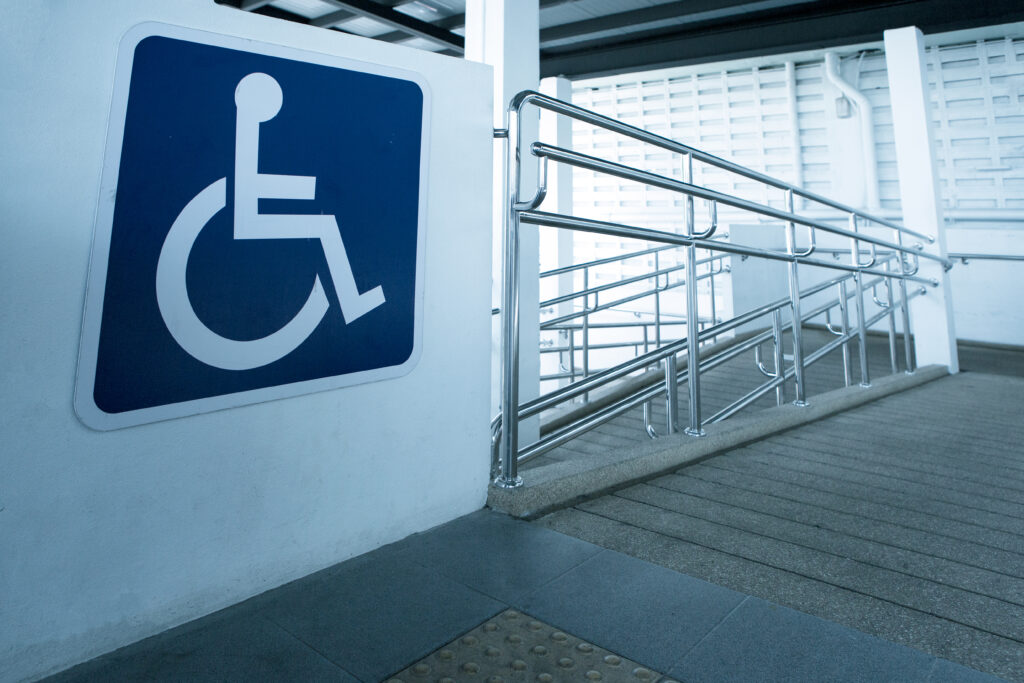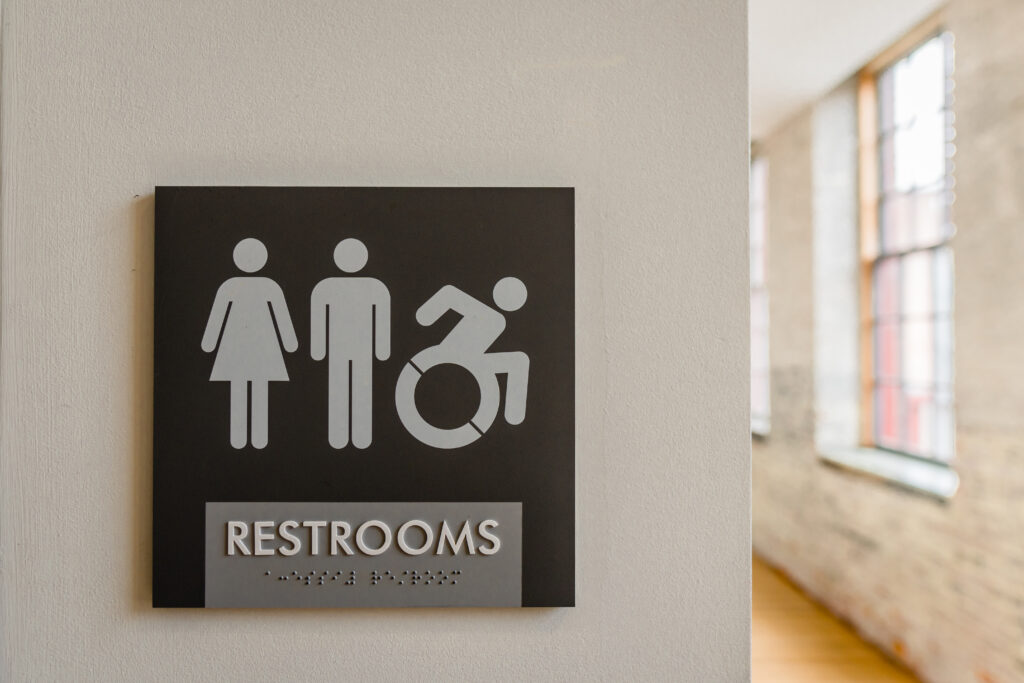
Understanding Accessible, Type A, Type B, and Type C Units in the A117.1 Standard
There are four levels of accessibility for dwelling and sleeping units; from most to least requirements, that is accessible, Type A, Type B and Type C units.
A common question posed in the building safety community is why are there accessible, Type A, Type B and Type C units in the International Code Council’s A117.1 accessibility standard?
There are four levels of accessibility for dwelling and sleeping units in the technical standard referenced by the building codes for accessibility—ICC A117.1–2009 Accessible and Usable Buildings and Facilities (ICC A117.1). In descending order, from most to least requirements, that is accessible, Type A, Type B and Type C units. Two of the four types are to coordinate with federal regulations. Accessible units are coordinated with the 2010 ADA Standard for Accessible Design (2010 ADA). The Type B units are coordinated with the Fair Housing Accessibility Guidelines (FHA).
The FHA typically deals with permanent multi-family housing, such as apartments, condominiums and townhouses (with four or more units). For residential facilities, the 2010 ADA covers transient lodging, such as hotels. Where these two federal standards overlap is in residential facilities such as dormitories and nursing homes.
For example, in a nursing home, per the 2010 ADA, 50 percent of the residents’ rooms are required to be accessible units; and per the FHA, 100 percent of the residents’ rooms are required to be FHA/Type B units. The FHA does recognize that the accessible units exceed the Type B unit requirements. The International Building Code® (IBC) is where the requirements from both federal rules are brought together—50 percent accessible and the remainder are Type B units.
Read about the approval of the Code Council’s first edition of the ANSI Standard A117.1 here.

Where Are Accessible Units and Type A Units Required Based on the A117.1 Standard?
The percentages of accessible units are based on the anticipated need within the type of facility. Accessible units are a percentage of facilities that are transient lodging [hotels (approximately 2 percent)] and institutional facilities [rehabilitation hospitals (100 percent), nursing homes (50 percent) and hospitals (10 percent)] based on need.
The IBC also requires accessible units in assisted-living facilities (4 percent in Group I-1, Condition 1 and 10 percent in Group I-1, Condition 2) and Type A units in apartment buildings with more than 20 units (2 percent dispersed by type). These IBC requirements exceed federal requirements but are based on anticipated needs for accessibility in these types of occupancies.
Where are Type B Units Required Based on the A117.1 Standard?
Type B units are required in buildings where people live where there are four or more dwelling or sleeping units. There are exceptions for multi-story units, buildings with no elevators, steep sites and residential buildings required to be elevated because of flood provisions. See IBC Section 1107 for specifics.
When the U.S. Department of Housing and Urban Development (HUD) reviewed the IBC and ICC A117.1 for “safe harbor,” there were a couple of important differences that were learned between the way the FHA and the IBC looked at buildings.
The FHA always talks about dwelling units—with the intent to apply to where a person lives—even if that living arrangement is more a bedroom than a full apartment (e.g., nursing homes and dormitories). Since the IBC interprets a dwelling unit to include independent facilities for cooking, sleeping, living and sanitation, their interpretation is more along the lines of a dwelling unit being an apartment, townhouse or single-family home.
To be consistent with the FHA, the scoping provisions in the IBC are applicable for both dwelling units and sleeping units. Also, the FHA did not agree with the IBC separation of transient and nontransient being based on a length of stay of 30 days—HUD thought someone might live someplace for a shorter duration than that. To address this issue, Type B units are required when a unit is “intended to be occupied as a residence.” HUD also does not recognize firewalls or property lines when determining the number of units, which is why the criteria in IBC talks about Type B units in a “structure” rather than a “building.”
Thus, while accessible units are always required in a hotel, Type B units are not always required. HUD has stated that the following factors are relevant to determine whether the units are subject to Type B requirements:
Where persons can stay more or less than 30 days, including hotels, motels, corporate housing and seasonal vacation units, in determining the applicability of Type B unit criteria:
- Amenities included inside the units, including kitchen facilities;
- Whether the property is to be marketed to the public as short-term housing;
- Whether the terms and length of the occupancy will be established through a lease or other written agreement; and
- How payment is calculated (e.g., on a daily, weekly, monthly or yearly basis). If the amenities and operation of the units are closer to those of apartments than of hotels, they are subject to Type B requirements. For example, if a hotel is marketed as short-term housing, payment is made monthly, and if the units contain kitchens, the hotel would be subject to Type B unit criteria.
Where Are Type C Units Required Based on the A117.1 Standard?
Type C units are not required in the IBC or International Residential Code®. The Type C dwelling units criteria in the ICC A117.1 were established for adoption by individual jurisdictions if they wanted a minimal level of accessibility for new single-family homes. How the jurisdiction may choose to do this is based on the building sites in the area and the anticipated need. Some examples have been asking for a percentage of the homes in a development to meet Type C criteria; to allow increased density in a development based on the percentage of Type C units offered; or offering tax incentives for Type C units.
Technical Differences Between Type A, B and C Units
The accessible units are constructed to allow people using wheelchairs to have full access to all living spaces, with a special focus on bathrooms and kitchens. The intent is to coordinate with the 2010 ADA Standard for Accessible Design. An example of the level of accessibility is the doors within the units—they must be wide enough for a person using a wheelchair to move through the door, as well as have maneuvering space to open the door, lever handles, a smooth surface on the bottom of the push side and 5-pound maximum opening force.

Type A Unit
The Type A unit went into the IBC in the 1970s as the adaptable dwelling unit. It is not required by either the 2010 ADA or FHA Guidelines, although it is sometimes required where an apartment complex receives federal funding. The Type A is actually between the accessible units and the Type A units for wheelchair access. While some elements, such as the doors, are constructed the same as the accessible units, the idea was to allow for some features to be modified/added based on the tenants’ needs—such as adding grab bars in the bathrooms or being able to pull cabinets from under sinks to provide for a front approach.
Type B Unit
The Type B dwelling unit is intended to match the FHA Guidelines. The Type B units are thinking more about homes for life or aging in place—they are usable by a person in a wheelchair, but not wheelchair friendly. For example, the doors within the units are wide enough for a person using a walker or wheelchair to get through the door, but there are no requirements for maneuvering clearances, lever hardware, etc. Only the front door is required to meet the higher accessibility requirements.
Type C Unit
The Type C units were added to the A117.1 as there was more interest in criteria that would allow for persons to stay in their homes longer. Single-family homes and duplexes typically fell below any of the accessibility requirements scoped in the codes. The intent of the Type C is planning for persons to be able to age-in-place, similar to Type B units. There are some additional allowances, such as the zero-step entry to be any door on the unit, not just the front door.
The accessible, Type A and Type B dwelling unit requirements are in the same order. The language is written so that anything permitted in a unit with a higher level of accessibility would be permitted in a type with a lower level of accessibility.
For example, a Type B unit could use a lavatory with knee and toe clearance (accessible unit), a lavatory with a removable cabinet (Type A unit) or a side approach (Type B unit). In the ICC A117.1, accessible unit criteria is in Section 1002, Type A is in Section 1003 and Type B is in Section 1004. The order of the requirements are as follows:
- 100*.1 Type of unit
- 100*.2 Primary entrance
- 100*.3 Accessible route
- 100*.4 Walking surfaces
- 100*.5 Doors and doorways
- 100*.6 Ramps
- 100*.7 Elevators
- 100*.8 Platform lifts
- 100*.9 Operable parts
- 100*.10 Laundry equipment
- 100*.11 Bathing rooms
- 100*.12 Kitchens
- 100*.13 Windows
- 100*.14 Storage facilities
Almost everyone during their lifetime will deal with times where they or a family member are recovering from an injury or operation and unable to move about as they usually do. As people grow older, the process of aging also limits mobility, vision or hearing. By pre-planning for options within dwelling units, people will be able to live in their homes for life. When a modification is needed, such as putting up grab bars, having the blocking already in place makes the modification very simple. If these items are put in place at the time of construction, costs are also very minimal.
To learn more about the A117.1 standard, click here.
Listen to a podcast episode on building accessibility standards in the U.S. and beyond here.









